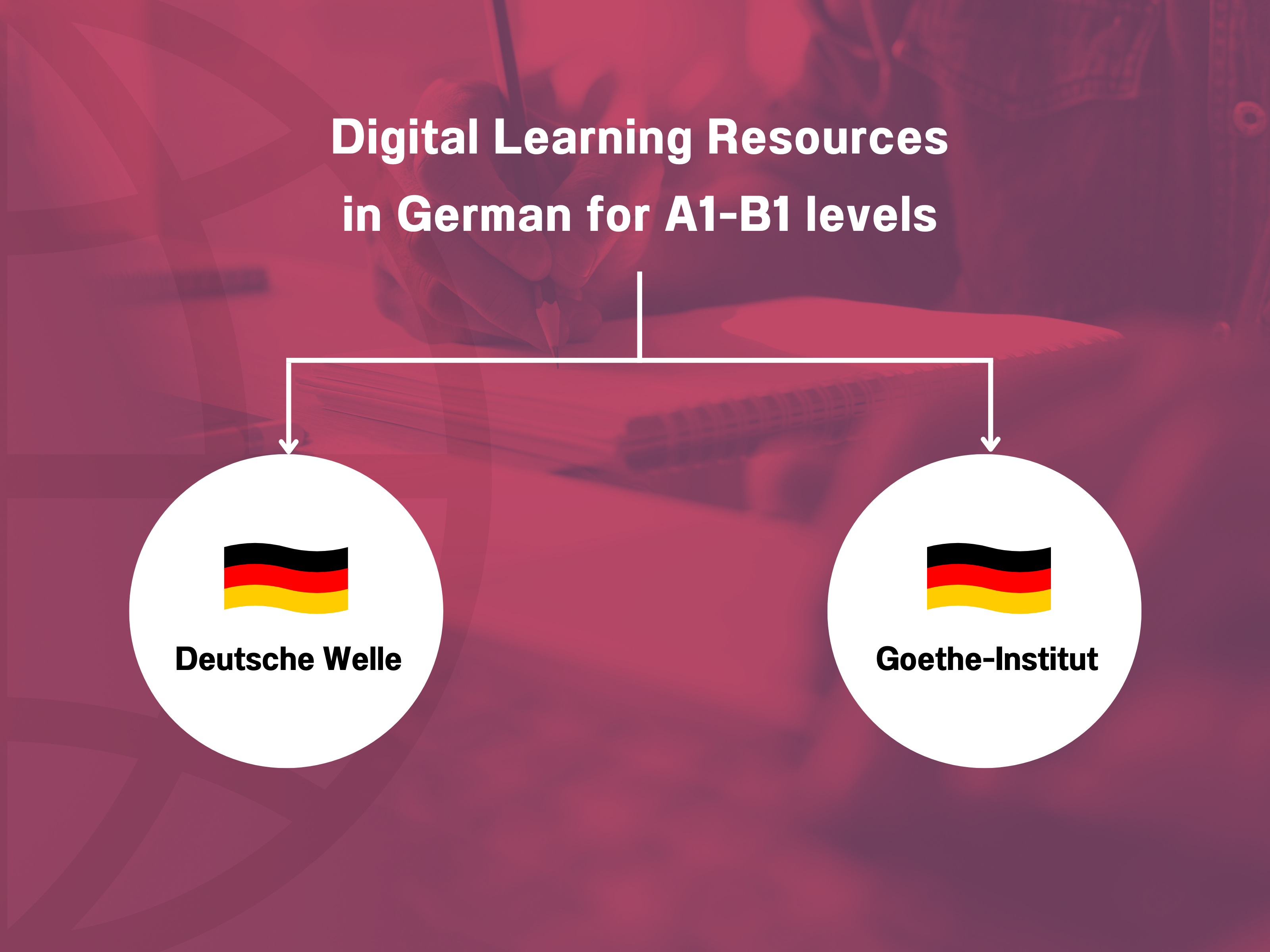An Analysis of Digital Learning Resources in German for A1–B1 levels
Main Article Content
Abstract
Objectives: This research aims to analyze and compare two digital learning resources in German for A1–B1 levels: Deutsche Welle and Goethe-Institut.
Methods: The data used in this research are digital learning resources in German for A1–B1 levels. The data were analyzed and compared using the following criteria: 1) the use of grammar, vocabulary, and expressions 2) expected language skills, 3) presentation and elements of content, and 4) German language teaching theories.
Results: The results can be described in four aspects: 1) the use of grammar, vocabulary, and expressions in digital learning resources from Deutsche Welle is presented more clearly than those from the Goethe-Institut; 2) resources from the Goethe-Institut offer a wider range of language skills compared to Deutsche Welle; 3) Deutsche Welle provides more variety in presentation and content than the Goethe-Institut; and 4) both employ a communicative approach (Der kommunikative Ansatz) as the main teaching theory, while the audio-visual method (Die audiovisuelle Methode, AVM) was found only in resources from Deutsche Welle.
Application of this study: The results of this research provide information for German language learners to help them select learning resources that match their learning objectives and support their self-development.
Downloads
Article Details

This work is licensed under a Creative Commons Attribution-NonCommercial-NoDerivatives 4.0 International License.
References
Adamczak-Krysztofowicz, S., Stork, A., & Trojan, K. (2015). Mobiles Fremdsprachenlernen mit Podcasts. Medien Pädagogik: Zeitschrift für Theorie Und Praxis Der Medienbildung, 2015 (Occasional Papers), 15-30. DOI: https://doi.org/10.21240/mpaed/00/2015.02.27.X DOI: https://doi.org/10.21240/mpaed/00/2015.02.27.X
Baliluk, N. & Others. (2018). Einführungstext: Grammatik Übersetzungsmethode und die direkte Methode. In DAAD (Ed.), Dhoch3- Studienmodule Deutsch als Fremdsprache. Retrieved from moodle.daad.de. DOI: 10,31816/Dhoch3.2018.13 DOI: https://doi.org/10.31816/Dhoch3.2018.13
Deutsche Welle. (n.d). Kostenlos online Deutsch lernen. Retrieved 14 July 2023, from https://learngerman.dw.com/de/deutsch-lernen/s-9095
Goethe-Institut. (2023). Concepts and materials CEFR-ACTFL SCALES COMPARISON. Retrieved 14 July 2023, from https://www.goethe.de/ins/gb/en/spr/unt/kum/mdg/ver.html
Goethe-Institut. (n.d.). KOSTENLOS DEUTSCH ÜBEN. Retrieved 14 July 2023, from https://www.goethe.de/de/spr/ueb.html
Haß, F. (2010). Methoden im Fremdsprachenunterricht. In Handbuch Fremdsprachendidaktik. Hallet, W., Königs, F. G. (Eds) Klett - Kallmeyer: Berlin.
Nanga-Me-Abengmoni, L. (2020). M-Learning im kamerunischen DaF – Unterricht. Bestandaufnahme und Perspektiven, REDELENSY, 2020(003), 395-410.
Neuner, G. & Hunfeld, H. (1993). Methoden des fremdsprachlichen Unterrichts. Eine Einführung. Berlin/ München et al.: Langenscheidt.
Radke, H. (2021). Didaktisierung mit digitalen Medien im DaF-Unterricht am Beispiel von Deutsch als Minderheits- und als Fremdsprache in der Ukraine. In Philipp, H., Stangl, T. & Wellner, J. (Eds.), Deutsch in der Ukraine. Geschichte, Gegenwart und zukünftige Potentiale. pp. 16-30. Regensburg: FzDiMOS.
Rösler, D. (2010). Die Funktion von Medien im Deutsch als Fremd- und Deutsch als Zweitsprache-Unterricht. In Krumm, H., Fandrych, C., Hufeisen, B. & Riemer, C. (Eds.), Deutsch als Fremd- und Zweirsprache. Ein internaltionales Handbuch. pp. 1199-1214. Berlin/ New York: de Gruyter.
Rösler, D. (2012). Deutsch als Fremdsprache. Eine Einführung. Weimar: J.B. Metzler. DOI: https://doi.org/10.1007/978-3-476-05284-1
Salomo, D. (n.d.). Unterrichtsgestaltung. Mehr digitale Medien im Unterricht. Retrieved 14 May 2024, from https://www.goethe.de/de/spr/unt/kum/jug/jla/20392176.html
Storch, G. (1999). Deutsch als Fremdsprache – Eine Didaktik. Paderborn: W. Fink.
Würffel, N. (2010). Deutsch als Fremd- und Deutsch als Zweitsprache- Lernen in elektronischen Umgebungen. In Krumm, H., Fandrych, C., Hufeisen, B. & Riemer, C. (Eds.), Deutsch als Fremd- und Zweirsprache. Ein internaltionales Handbuch. (pp. 1227-1243). Berlin/ New York: de Gruyter.


